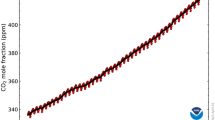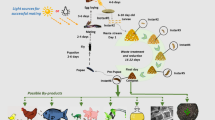Abstract
Chlordecone (Kepone) (CLD) is a highly persistent pesticide formerly used in the French West Indies. High levels of this pesticide are still found in soils and represent a subsequent source of contamination for outdoor-reared animals which may ingest involuntary non negligible amounts of soil. In that context, sequestering matrices like activated carbons (ACs) may be used to efficiently decrease the bioavailability of such organic pollutants. The present study intends to assess the respective efficiency of two sequestering strategies where two different ACs were provided either via feed incorporation or via soil amendment. This study involved 20 piglets randomly distributed into 5 experimental groups (4 replicates). All groups were exposed to 10 μg of CLD per kg of BW per day during 10 days via a contaminated soil. In both “Soil-ACs” treatment groups, the contaminated soil was amended by 2% (mass basis) of one of the two ACs. The two “Feed-ACs” groups received the contaminated soil and one dough ball containing 0.5% (mass basis) of one of the ACs. The piglets were then euthanized before collection of pericaudal adipose tissue and the whole liver and CLD analysis. A significant decrease of CLD concentrations in liver and adipose tissue was observed only in the “Soil-ACs” groups in comparison with the control group (P < 0.001). This decrease was particularly important for the coconut shell activated carbon where relative bioavailability was found lower than 1.8% for both tissues.



Similar content being viewed by others
References
Ahmad M, Rajapaksha AU, Lim JE et al (2014) Biochar as a sorbent for contaminant management in soil and water: a review. Chemosphere 99:19–33. https://doi.org/10.1016/j.chemosphere.2013.10.071
Arsène M-A, Bilba K, Savastano Junior H, Ghavami K (2013) Treatments of non-wood plant fibres used as reinforcement in composite materials. Mater Res 16:903–923
Babusiaux C, Girard J-F, Mousel M (1990) Arrêté du 3 juillet 1990 relatif aux conditions de délivrance et d’emploi, en agriculture, de substances vénéneuses et dangereuses
Bordet F, Thieffinne A, Mallet J et al (2007) In-house validation for analytical methods and quality control for risk evaluation of chlordecone in food. Int J Environ Anal Chem 87:985–998
Boucher O, Simard M-N, Muckle G et al (2013) Exposure to an organochlorine pesticide (chlordecone) and development of 18-month-old infants. NeuroToxicology 35:162–168. https://doi.org/10.1016/j.neuro.2013.01.007
Bouveret C, Rychen G, Lerch S et al (2013) Relative bioavailability of tropical volcanic soil-bound chlordecone in piglets. J Agric Food Chem 61:9269–9274. https://doi.org/10.1021/jf400697r
Branton P, Bradley RH (2010) Effects of active carbon pore size distributions on adsorption of toxic organic compounds. Adsorption 17:293–301. https://doi.org/10.1007/s10450-010-9284-4
Brunauer S, Emmett PH, Teller E (1938) Adsorption of gases in multimolecular layers. J Am Chem Soc 60:309–319. https://doi.org/10.1021/ja01269a023
Cabidoche YM, Lesueur-Jannoyer M (2012) Contamination of harvested organs in root crops grown on chlordecone-polluted soils. Pedosphere 22:562–571. https://doi.org/10.1016/S1002-0160(12)60041-1
Cabidoche YM, Achard R, Cattan P et al (2009) Long-term pollution by chlordecone of tropical volcanic soils in the French West Indies: a simple leaching model accounts for current residue. Environ Pollut 157:1697–1705
Chu GM, Jung CK, Kim HY et al (2013a) Effects of bamboo charcoal and bamboo vinegar as antibiotic alternatives on growth performance, immune responses and fecal microflora population in fattening pigs. Anim Sci J 84:113–120. https://doi.org/10.1111/j.1740-0929.2012.01045.x
Chu GM, Kim JH, Kim HY et al (2013b) Effects of bamboo charcoal on the growth performance, blood characteristics and noxious gas emission in fattening pigs. J Appl Anim Res 41:48–55. https://doi.org/10.1080/09712119.2012.738219
Commission of the European Communities (2008) Commission Regulation (EC) No 839/2008 of 31 July 2008 amending Regulation (EC) No 396/2005 of the European Parliament and of the Council as regards Annexes II, III and IV on maximum residue levels of pesticides in or on certain products
Cordier S, Bouquet E, Warembourg C et al (2015) Perinatal exposure to chlordecone, thyroid hormone status and neurodevelopment in infants: the Timoun cohort study in Guadeloupe (French West Indies). Environ Res 138:271–278. https://doi.org/10.1016/j.envres.2015.02.021
Dallaire R, Muckle G, Rouget F et al (2012) Cognitive, visual, and motor development of 7-month-old Guadeloupean infants exposed to chlordecone. Environ Res 118:79–85. https://doi.org/10.1016/j.envres.2012.07.006
de Boer JH, Lippens BC, Linsen BG et al (1966) The t-curve of multimolecular N2-adsorption. J Colloid Interface Sci 21:405–414. https://doi.org/10.1016/0095-8522(66)90006-7
de Mendiburu F (2019) Agricolae: statistical procedures for agricultural research. R Package Version 1:3–0
Delannoy M, Rychen G, Fournier A et al (2014a) Effects of condensed organic matter on PCBs bioavailability in juvenile swine, an animal model for young children. Chemosphere 104:105–112. https://doi.org/10.1016/j.chemosphere.2013.10.072
Delannoy M, Schwarz J, Fournier A et al (2014b) Effects of standard humic materials on relative bioavailability of NDL-PCBs in juvenile swine. PLoS ONE 9:e115759. https://doi.org/10.1371/journal.pone.0115759
Durimel A, Altenor S, Miranda-Quintana R et al (2013) pH dependence of chlordecone adsorption on activated carbons and role of adsorbent physico-chemical properties. Chem Eng J 229:239–249
French Ministry of Agriculture (2015) DGAL/SDPAL/2015-266. French Ministry of Agriculture, Paris
Gaspard S, Durimel A, Passé-Coutrin T, Jeanne-Rose V (2014) Activated carbons from plantae and marine biomass for water treatment. In: Gaspard S, Ncibi C (eds) Biomass for sustainable applications-energy production and storage and pollution remediation. Royal Society of Chemistry. United Kingdom. (in press)
Guldner L, Multigner L, Héraud F et al (2010) Pesticide exposure of pregnant women in Guadeloupe: ability of a food frequency questionnaire to estimate blood concentration of chlordecone. Environ Res 110:146–151. https://doi.org/10.1016/j.envres.2009.10.015
Hilber I, Bucheli TD (2010) Activated carbon amendment to remediate contaminated sediments and soils: a review. Glob Nest J 12:305–317
Jondreville C, Bouveret C, Lesueur-Jannoyer M et al (2013) Relative bioavailability of tropical volcanic soil-bound chlordecone in laying hens (Gallus domesticus). Environ Sci Pollut Res 20:292–299. https://doi.org/10.1007/s11356-012-1010-1
Jurjanz S, Jondreville C, Mahieu M et al (2014) Relative bioavailability of soil-bound chlordecone in growing lambs. Environ Geochem Health 36:911–917. https://doi.org/10.1007/s10653-014-9608-5
Knettig E, Thomson BM, Hrudey SE (1986) Competitive activated carbon adsorption of phenolic compounds. Environ Pollut Ser B Chem Phys 12:281–299. https://doi.org/10.1016/0143-148X(86)90016-9
Ku HH (1966) Notes on the use of propagation of error formulas. J Res Natl Bur Stand 70
Le Déaut J-Y, Procaccia C (2009) Impacts de l’utilisation de la chlordécone et des pesticides aux Antilles : bilan et perspectives d’évolution. Sénat
Lippens BC, de Boer JH (1965) Studies on pore systems in catalysts: V. The t method. J Catal 4(3):319–323. https://doi.org/10.1016/0021-9517(65)90307-6
Levillain J, Cattan P, Colin F et al (2012) Analysis of environmental and farming factors of soil contamination by a persistent organic pollutant, chlordecone, in a banana production area of French West Indies. Agric Ecosyst Environ 159:123–132. https://doi.org/10.1016/j.agee.2012.07.005
Littell RC, Henry PR, Lewis AJ, Ammerman CB (1997) Estimation of relative bioavailability of nutrients using SAS procedures. J Anim Sci 75:2672–2683
Multigner L, Ndong JR, Giusti A et al (2010) Chlordecone exposure and risk of prostate cancer. J Clin Oncol 28:3457–3462. https://doi.org/10.1200/JCO.2009.27.2153
Multigner L, Kadhel P, Rouget F et al (2016) Chlordecone exposure and adverse effects in French West Indies populations. Environ Sci Pollut Res Int 23:3–8. https://doi.org/10.1007/s11356-015-4621-5
National Environmental Policy Institue (NEPI), 2000. Assessing the bioavailability of metals in soil for use in human health risk assessments. Washington, DC:NEPI As cited By : NRC. Bioavailability of Contaminants in Soils and Sediments: Processes, Tools, and Applications. Washington, DC: National Academies Press, 2003 p24.
OECD (1984) Test n° 207 earthworm acute toxicity test. In: Section 4: effects on biotic systems. OECD Publishing, Paris. https://doi.org/10.1787/20745761
Shafer DS, Zhang Z (2013) Introductory statistics. Saylor.org Academy. https://open.umn.edu/opentextbooks/textbooks/135. Accessed 25 November 2019.
Sing KSW (1982) Reporting physisorption data for gas/solid systems with special reference to the determination of surface area and porosity (Provisional). Pure Appl Chem 54:2201–2218. https://doi.org/10.1351/pac198254112201
Wang F, Ren X, Sun H et al (2016) Sorption of polychlorinated biphenyls onto biochars derived from corn straw and the effect of propranolol. Bioresour Technol 219:458–465. https://doi.org/10.1016/j.biortech.2016.08.006
Wittsiepe J, Erlenkämper B, Welge P et al (2007) Bioavailability of PCDD/F from contaminated soil in young Goettingen minipigs. Chemosphere 67:S355–S364. https://doi.org/10.1016/j.chemosphere.2006.05.129
Woignier T, Fernandes P, Jannoyer-Lesueur M, Soler A (2012) Sequestration of chlordecone in the porous structure of an andosol and effects of added organic matter: an alternative to decontamination. Eur J Soil Sci 63:717–723. https://doi.org/10.1111/j.1365-2389.2012.01471.x
Woignier T, Clostre F, Fernandes P, et al. (2015) Compost addition reduces porosity and chlordecone transfer in soil microstructure. Environ Sci Pollut Res 1–11. https://doi.org/10.1007/s11356-015-5111-5
Yehya S, Delannoy M, Fournier A et al (2017) Activated carbon, a useful medium to bind chlordecone in soil and limit its transfer to growing goat kids. PLOS ONE 12:e0179548. https://doi.org/10.1371/journal.pone.0179548
Acknowledgments
We thank C. Soligot, P. Hartmeyer, and H. Toussaint (Universite de Lorraine, EA 3998) for their valuable technical support.
Author information
Authors and Affiliations
Corresponding author
Additional information
Responsible editor: Philippe Garrigues
Publisher’s note
Springer Nature remains neutral with regard to jurisdictional claims in published maps and institutional affiliations.
Rights and permissions
About this article
Cite this article
Delannoy, M., Techer, D., Yehya, S. et al. Evaluation of two contrasted activated carbon-based sequestration strategies to reduce soil-bound chlordecone bioavailability in piglets. Environ Sci Pollut Res 27, 41023–41032 (2020). https://doi.org/10.1007/s11356-019-06494-z
Received:
Accepted:
Published:
Issue Date:
DOI: https://doi.org/10.1007/s11356-019-06494-z




